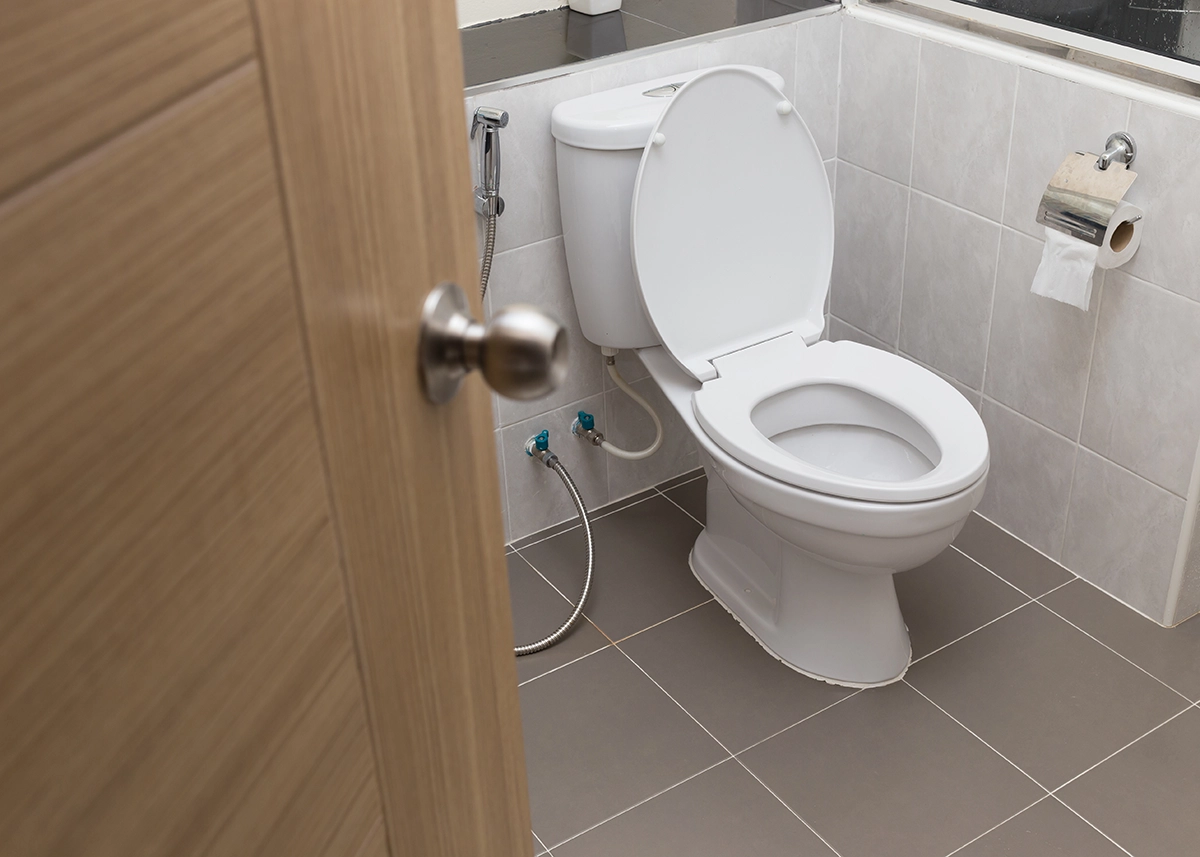Why Is Your Toilet Flapper Not Sealing? Fix It Fast
Home /
A toilet that won’t stop running is more than just annoying—it’s also wasting gallons of water every day and driving up your utility bill. In many cases, the problem is a toilet flapper not sealing properly. Though small, this rubber part plays a crucial role in keeping your toilet working efficiently. At Clog Heroes in Fredericksburg, VA, we help homeowners fix toilet issues fast—so you can get back to a quiet, leak-free bathroom.
What Is the Toilet Flapper and What Does It Do?
The toilet flapper is a flexible rubber or silicone valve located at the bottom of your toilet tank. It’s attached to the flush handle by a chain. When you flush the toilet, the handle lifts the flapper, allowing water to rush from the tank into the bowl. After the flush, the flapper is supposed to fall back into place and seal the flush valve.
That seal keeps water from continuing to leak into the toilet bowl. If the flapper doesn’t seal correctly, water keeps flowing—and the tank never fully refills. That’s when you hear the constant running sound or periodic refilling that signals a leak.
Common Reasons the Toilet Flapper Is Not Sealing
Understanding why your toilet flapper is not sealing is the first step toward fixing it. Here are the most common causes:
1. Worn Out or Cracked Flapper
Over time, flappers can deteriorate due to age, water quality, or exposure to tank cleaning chemicals. When the rubber gets brittle, warped, or cracked, it can’t form a tight seal. Even small deformities allow water to escape slowly into the bowl.
If your flapper has been in place for several years or feels stiff to the touch, it’s time to replace it.
2. Chain Issues
The chain that connects the flush lever to the flapper needs to be the right length. If it’s too short, the flapper can’t fully close. If it’s too long, it may get caught underneath the flapper or tangled—both of which keep the seal from forming properly.
An ideal chain should have about 1/2 inch of slack. You can adjust it easily by moving the clip to a different link or trimming it.
3. Mineral Buildup and Debris
In Fredericksburg and surrounding areas, hard water can lead to mineral deposits in your toilet tank. These deposits may collect around the flush valve seat, preventing the flapper from sitting flat and sealing correctly. Even a little grit or sediment can cause a leak.
Cleaning the valve seat with a sponge or a soft brush can help. Be gentle—scratching the surface can make sealing even harder.
4. Wrong Size or Poor Fit
Not all flappers are the same size. Toilets come with different-sized flush valves, and using the wrong type of flapper will result in leaks. If you’ve recently replaced your flapper and it’s still leaking, double-check that it matches your toilet model.
Some toilets—especially older or high-efficiency ones—require specialty flappers or exact OEM replacements to function properly.
5. Flapper Misalignment
Sometimes the flapper itself is in good shape, but it isn’t aligned over the flush valve opening. This can happen if it’s installed crooked, if the mounting arms are loose, or if the tank hardware has shifted. Misalignment causes water to bypass the flapper even when it looks like it’s closed.
Reinstalling the flapper evenly and securing the mounting posts can resolve this issue.
How to Tell If the Toilet Flapper Isn’t Sealing
The most obvious sign of a toilet flapper not sealing is a constantly running toilet. But there are other clues too:
You hear water refilling in the tank when no one has flushed
Water ripples or moves in the toilet bowl
You notice higher-than-usual water bills
There’s a faint hissing or dripping sound from the tank
A quick test involves adding food coloring to the tank. Wait 15–20 minutes without flushing. If colored water appears in the bowl, the flapper is leaking.
DIY Fixes for a Toilet Flapper That’s Not Sealing
If you’re handy with basic tools, you can often fix or replace a toilet flapper yourself. Here’s how:
Turn off the water to the toilet using the shut-off valve behind the tank.
Flush the toilet to empty the tank.
Disconnect the chain from the flush lever.
Remove the flapper from its pegs or posts.
Clean the valve seat with a sponge or rag to remove any buildup.
Install the new flapper, ensuring it’s properly seated and aligned.
Reconnect and adjust the chain to have minimal slack.
Turn the water back on and test the flush.
Be sure to purchase a flapper that matches your toilet’s brand and flush valve size. Universal models work for many toilets, but not all.
When to Call a Professional Plumber
Sometimes, replacing the flapper doesn’t solve the problem. You may be dealing with a warped flush valve seat, corroded tank components, or other plumbing issues that aren’t visible. In these cases, it’s best to call a licensed plumber.
At Clog Heroes, we provide fast, affordable toilet repairs in Fredericksburg, VA, and nearby areas. Our trained technicians can quickly diagnose the cause of the leak, replace worn parts, and make sure everything seals and flushes properly.
We also inspect for hidden leaks or larger issues that may be wasting water behind the scenes.
Don’t Let a Leaky Flapper Cost You
A toilet flapper not sealing properly may seem like a small issue—but it can waste up to 200 gallons of water a day. That’s money literally going down the drain. Whether you’re dealing with a slow leak, constant running, or repeated DIY fixes that don’t last, Clog Heroes is here to help.
We offer same-day service, honest pricing, and guaranteed repairs. Call us today to stop the leak and save on your water bill.

